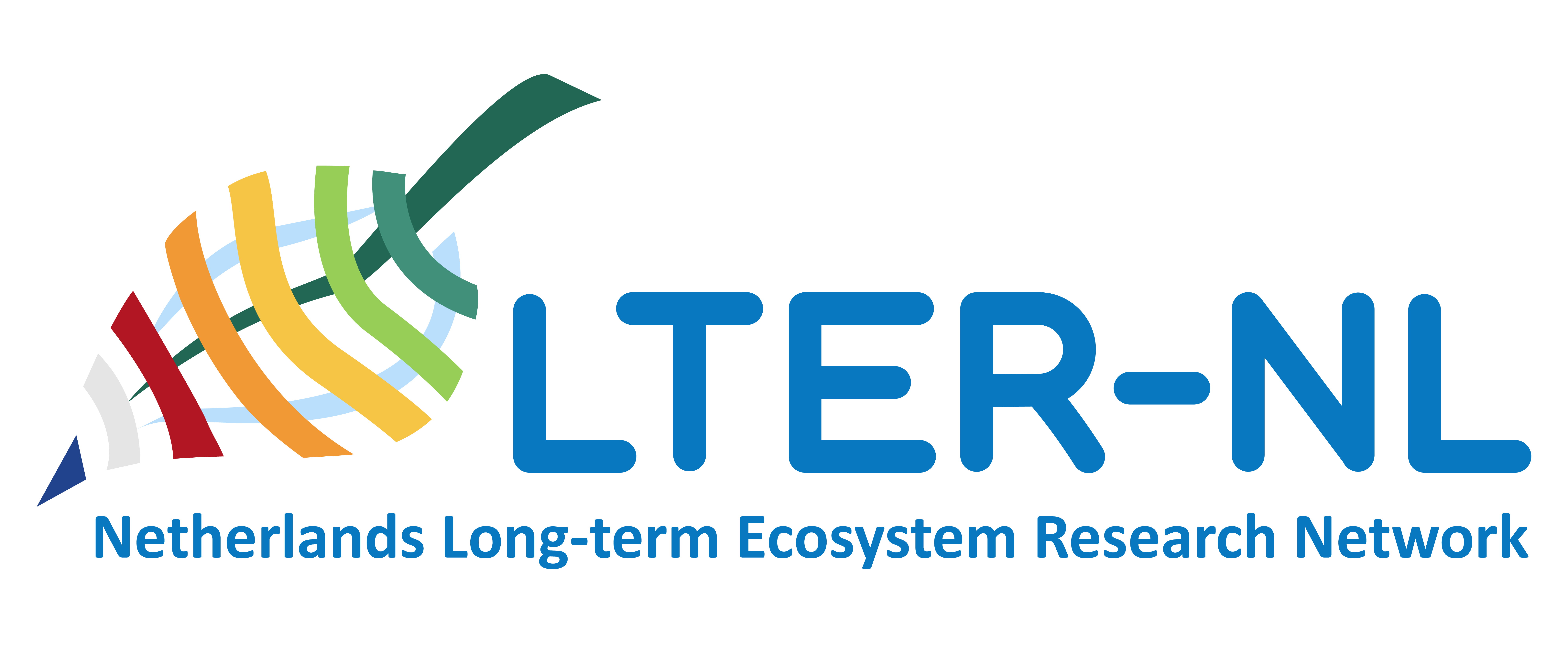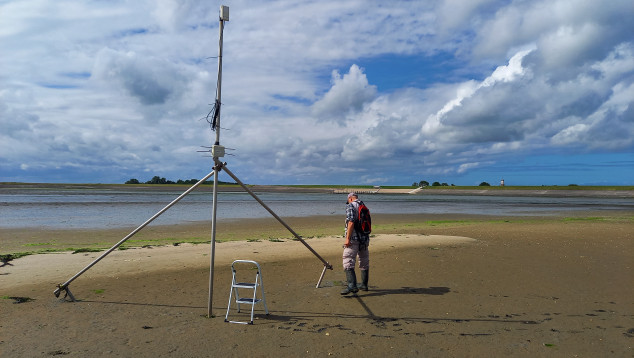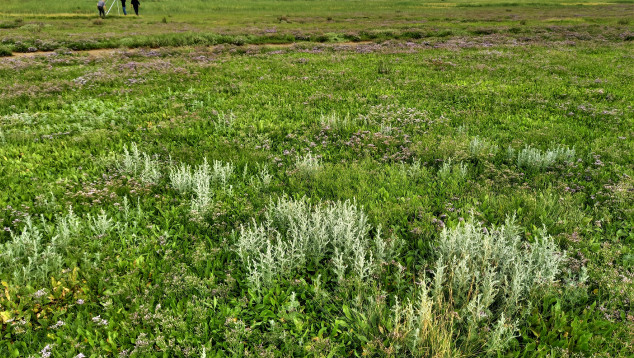Netherlands Long-term Ecosystem Research Network (LTER-NL)
LTER-NL stands for Long-term Ecosystem Research Network in the Netherlands. It is a national network of research sites engaged in long-term, site-based ecological, environmental and socio-ecological research. Currently LTER-NL consists of two Long-Term Socio-Ecological Research (LTSER) Platforms: the Dutch Wadden Sea and the Veluwe. In addition there is the LTSER-platform Scheldt Estuary, that is partly situated in the Netherlands and officially part of LTER Belgium.
About
Our world is changing at an unprecedented rate, with multiple stressors acting simultaneously at different temporal and spatial scales, leading to significant losses of biodiversity and ecosystem services that inevitably affect humanity. Understanding of long-term and systemic effects, and cross-scale interactions, are needed to develop appropriate mitigation and adaptation measures, but this requires a much better understanding of the multifaceted environmental system at the landscape scale. For the scientific analysis of these problems, long-term data are often unavailable and only data from short time series can be used, although long-term and large-scale observations are essential to study how environmental sustainability can be achieved.
What is needed is Long-term Ecosystem Research: a large-scale distributed research infrastructure that makes the long-term datasets available for analysis. These long-term data are either at a local or at the landscape scale and preferably go back several decades, covering different species groups, environmental and socio-economic variables. Only such long-term data allow for a sufficient understanding of the ongoing changes in our ecosystems. A considerable amount of monitoring data of ecological, environmental and socio-economic variables are collected as part of monitoring programs by government agencies, dedicated long-term research programs by research institutes, citizen science organisations, and private companies. However, many of these data sets are not readily available for research as they are not Findable, Accessible, Interoperable and Reusable (FAIR). When available for analysis, they are instrumental in showing how ecological processes affect the composition and functioning of biodiversity (at the level of genes, populations, species, communities, up to ecosystems and landscapes) under a changing climate, and with changes in the use of land and water.
Mission LTER-NL
The mission of the Netherlands Long-term Ecosystem Research Network (LTER-NL) is to make long-term ecological and biodiversity data available for all major landscapes in the Netherlands and to provide tools to link these ecological data with environmental and socio-economic monitoring data, allowing the pursuit of pressing scientific questions to solve environmental and socio-ecological problems.
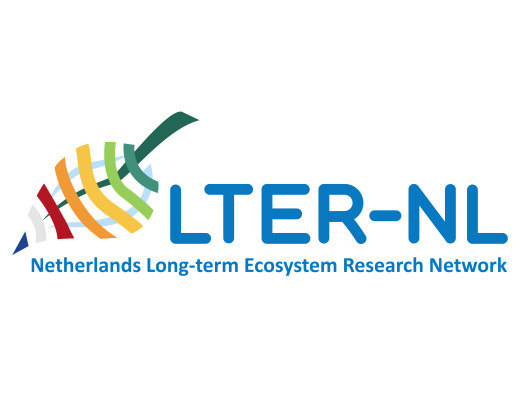
1. Make long-term ecological and biodiversity data available for all major landscapes in the Netherlands according to the Open Science and FAIR principles
Present landscapes included in the LTER-NL are the coastal landscape of the Wadden Sea area, and the terrestrial landscape of the Veluwe. In addition, the Scheldt estuary is listed in the Belgium listed LTSER-platform. These monitoring schemes have been started as long as 65 years ago and include both small-scale high-quality data collection as well a larger-scale monitoring. Some of this monitoring is done by stand-alone measuring equipment (mainly environmental data) but many of the animal and plant monitoring is carried out by human observers, partly using citizen science. The socio-economic parameters mainly come from desk studies, relying on national databases. LTER-NL has the following strategic aims to make long-term ecological and biodiversity data available
- Locate long-term data sets and make these available according to the Open Science and FAIR principles.
- Identify major variables missing from the suite of monitoring programs and seek ways to initiate monitoring of these variables.
- Identify important landscapes that are missing from the infrastructure and add them as LTSER-platforms to LTER-NL.
2. Provide the tools to link ecological data with environmental and socio-economic monitoring data
LTER-NL aims to provide to the tools, including digital twins, to integrate the many ecological, environmental and socio-economic monitoring data, allowing the pursuit of pressing scientific questions. In close collaboration with the Large-Scale Research Infrastructure LifeWatch, LTER-NL will improve and set up ICT facilities to not only store data by using the FAIR principles, but to also integrate these data in a relational database, using spatial and temporal meta-data, and do quality control on these data, allowing a much better understanding of the multifaceted environmental system. For some of the LTSER sites this has already been organised, like for the Wadden, by WaLTER (ended March 2018 and continued as Basismonitoring Wadden), for other sites this needs to be developed. LTER-NL has the following strategic aims to link ecological data with environmental and socio-economics monitoring data:
- To provide the tools to integrate the LTER data with data from other distributed research infrastructures like NemNet, which monitors various environmental parameters, such as air quality, soil and groundwater quality.
- To develop links to the Virtual Labs developed by the e-Science Infrastructure for Biodiversity and Ecosystem Research LifeWatch.
Long-term ecological research in the Netherlands
The Netherlands has a strong tradition in long-term ecological research, with for instance internationally renowned population studies on songbirds started in the 1950s by the Netherlands Institute of Ecology (NIOO-KNAW), and since the 1970s population studies on benthic animals by the Netherlands Institute for Sea Research (NIOZ) and citizen science bird monitoring by Sovon Dutch Centre for Field Ornithology. It was however not until 2010 that LTER-NL was developed from scratch, with WaLTER (Wadden Sea Long-Term Ecological Research) as the starting point.
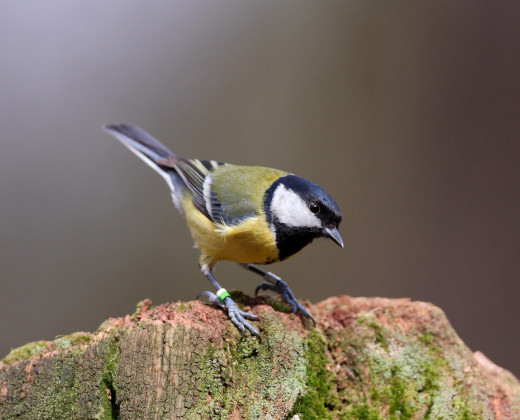
Network
LTER-NL is embedded in international activities. This results in many advantages for all participants, such as access to international datasets, cooperation with foreign colleagues, the implementation of joint projects, and the development of cross-regional comparative studies. In 2014 LTER-NL, consisting of only the LTSER-platform Dutch Wadden Sea, was provisionally admitted to the international umbrella organizations ILTER and LTER-Europe. In 2015, the Veluwe LTSER platform was added along with the Belgium listed LTSER-platform Scheldt Estuary, which includes the Dutch Westerschelde. In 2016 LTER-NL was unconditionally admitted to ILTER and LTER-Europe.
In 2018, the European umbrella LTER-Europe organization was added to the ESFRI (European Strategy Forum for Research Infrastructures) Roadmap. The aim is to become a fully-fledged Research Infrastructure by 2028, which would include obtaining a European legal status, most likely an ERIC (European Research Infrastructure Consortium).
In 2020, two eLTER-RI projects were funded. The eLTER Preparatory Phase Project (eLTER PPP) is a HORIZON 2020 funded Coordination and Support Action in preparation of implementing the eLTER Research Infrastructure. The eLTER PLUS project is a HORIZON 2020 funded Research and innovation action (RIA) with three main pillars: networking, joint research activities and transnational, remote and virtual access. It is closely linked to the eLTER Preparation Phase Project (eLTER PPP) and contributes to implementing the eLTER Research Infrastructure (eLTER RI).
In 2021, eLTER-NL was recognized as a Large-Scale Distributed Research Infrastructure by the Permanent Committee for Large-Scale Research Infrastructure in the Netherlands (see the Dutch Research Council (NWO) National Roadmap for Large-scale Research Infrastructure 2021. In November 2021, NWO opened the call for the first funding round for the Roadmap LSRI 2021. Only Roadmap consortia that are part of the Groups as defined in the Roadmap 2021 can apply for funding for realization of their LSRI-plans. For this round, LTER-NL has teamed up with LifeWatch-Netherlands (UvA) and NemNet (RIVM) to form LTER-LIFE. A consortium from the Netherlands Institute of Ecology (NIOO-KNAW), University of Amsterdam, National Institute for Public Health and the Environment (RIVM), Royal Netherlands Institute for Sea Research (NIOZ) and the Wageningen University & Research (WUR) will submit the LTER-LIFE proposal. The full application has been submitted in February 2022 and NWO expects to make a decision on funding in January 2023.
Research
The infrastructure provides the long-term data needed to engage in the following types of research:
Process-oriented ecosystem research
- Natural sciences basic research
- Investigation of functionally and structurally important ecosystem compartments
- Long-term impacts of drivers and combinations of drivers upon ecosystem functions and services)
Biodiversity and nature conservation research
- Recording the status, trend and functional relationships of species
- Ensuring the long-term survival of species, their genetic diversity and ecological integrity and functionality of habitats
- Long-term safeguarding of biodiversity supported ecosystem services
- Analysis and scenarios for the adaptation of species and habitats to global change (including climate change)
Socio-ecological research
- Socio-ecological basic research: Society-nature interaction, socio-ecological transitions, changes in resources use
- Environmental history and historical sustainability research
- Integrated socio-ecological modelling: Process and systems knowledge, scenarios, interdisciplinary integration
- Helping the effective response to grand societal challenges (e.g. sustainable water, food and energy supply, population growth, health)
Current sites
The information on current LTER-NL sites is registered in DEIMS-SDR (Dynamic Ecological Information Management System - Site and dataset registry). DEIMS-SDR is an information management system that allows discovery of long-term ecosystem research sites around the globe, along with the data gathered at those sites and the people and networks associated with them. DEIMS-SDR describes a wide range of sites, providing a wealth of information, including each site’s location, ecosystems, facilities, parameters measured and research themes. It is also possible to access a growing number of datasets and data products associated with the sites.
LTSER-platform Dutch Wadden Sea
The Dutch Wadden Sea area is a large coastal area (615510 ha) bordering the north of the Netherlands. A range of inhabited barrier islands (included in LTSER Dutch Wadden Sea Area) separate the Dutch Wadden Sea from the North Sea. The barrier islands comprise sandy beaches, dunes, grazed and ungrazed saltmarsh areas, and polders with meadows and villages. The Dutch Wadden Sea itself consists of intertidal mudflats and subtidal areas. The southern border of the area consists of inhabited polders, many of which consist of reclaimed saltmarsh areas. The Dutch Wadden Sea is part of the international Wadden Sea, extending along the coasts of Denmark, Germany and the Netherlands. The international Wadden Sea comprises the largest tidal flats system in the world, where natural processes proceed to a large extent undisturbed.
Information on environmental, ecological and socio-economic data is shared via Basismonitoring Wadden. Via Datahuis Wadden the data are made available. The Waddenacademie aims to furnish the scientific foundations for an economically and ecologically responsible future in the Wadden Sea Region, a World Heritage Site. To this end, it identifies major gaps in the existing knowledge of the Wadden Sea Region, provides a framework for future research and disseminates the results of that research. The beheerautoriteit Waddenzee aims to strengthen the cooperation among management organizations by developing an integral management plan for the Wadden Sea. The Coalitie Wadden Natuurlijk represents eight nature organizations joining forces to conserve and improve the natural values of the Dutch Wadden Sea.
The Dutch Wadden Sea is part of the international Wadden Sea, which together with the German and Danish Wadden Sea makes up the largest intertidal wetland in the world. Germany and Denmark are part of eLTER-RI, but only the German parts are designated as LTER-sites. If Denmark would also include the Danish part as an LTER-site, this would pave the way for the international Wadden Sea as a trilateral LTSER-platform. Much is already in place. The Common Wadden Sea Secretariat (CWSS) supports, facilitates and coordinates the Trilateral Wadden Sea Cooperation (TWSC). This transboundary ecosystem-based collaboration was a prerequisite for the designation of the Wadden Sea as World Heritage site. It includes the Trilateral Monitoring and Assessment Programme (TMAP), which spans a broad range of topics, such as morphology, ecological processes, wildlife and human activities.
LTSER-platform Veluwe
The area defined as ‘the Veluwe’ lies in the province of Gelderland, the Netherlands, West of the river IJssel and North of the river Rhine. The region hosts the largest connected nature area of the country: around 91.947 ha are part of the Natura 2000 area. The natural landscape consists of a mix of forests, heathlands, sand drifts, lakes, and moorlands. The Veluwe was settled a long time ago, and the area is now densely populated. Traces of burial mounds and agricultural fields are indicators of former human settlements. During prehistoric and medieval times, extraction of iron and timber took place on the Veluwe. After the start of the 19th century, large scale deforestation occurred, with several consequences for the nature and the landscape of the area. Human colonization increased rapidly in the 20th century. This resulted in increased infrastructure, intensified agriculture, and increased water extraction, with consequences for the groundwater levels and biodiversity. As it stands, the present nature regions are surrounded by agriculture, settlements, or infrastructure. This means there is a lot of interaction between humans and nature. For example, the National Park De Hoge Veluwe and the Kröller-Müller museum and surrounding attractions get more than half a million visitors per year. The unique circumstances of highly populated areas combined with nature provide great opportunities for research on the varied interactions between nature and humans to be carried out. A great array of different ecological and socio-economic research has already been carried out in the Veluwe, which makes it a good quality LTSER platform right from the start.
LTSER-platform Scheldt estuary and its alluvial plains
The LTSER-platform Scheldt estuary starts at the mouth of the river (Vlissingen, the Netherlands) and extends to Gent, 160 km from the mouth, where tidal influence is stopped by sluices. The tributaries the Durme and the Rupel, with the Nete, Dijle and Zenne are also under tidal influence and are considered part of the estuary. The natural inundated areas around the river and the valleys up to 5m TAW are also part of the study system.
In 2005, Flanders and the Netherlands signed a treaty to cooperate in policy and management of the Scheldt estuary. When the treaty became effective in 2008, this marked the start of the Vlaams-Nederlandse Scheldecommissie (VNSC). Abiotic and biotic monitoring data are accessible through the dataportal of the ScheldeMonitor.
Partners & contact
LTER-NL is coordinated by:
- Prof. Marcel E. Visser (NIOO-KNAW)
- Dr Bruno J. Ens (Sovon)
The LTER-NL coordinators can be contacted via LTER-NL@nioo.knaw.nl
-
Prof. Marcel E. Visser (NIOO-KNAW)
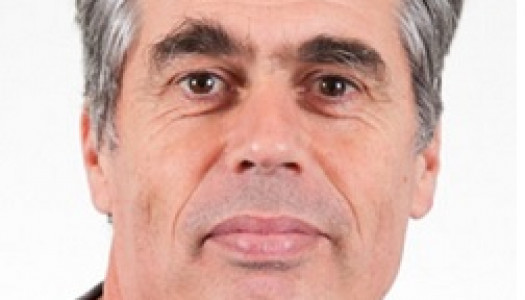
-
Dr Bruno J. Ens (Sovon)
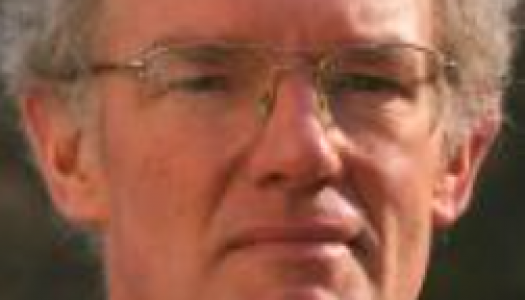
Partner institutes & organisations
| NIOO-KNAW | Netherlands Institute of Ecology | https://nioo.knaw.nl/ |
| NIOZ | Royal Netherlands Institute for Sea Research | https://www.nioz.nl/en |
| RWS | Rijkswaterstaat | https://www.rijkswaterstaat.nl/ |
| Sovon | Sovon Vogelonderzoek Nederland | https://www.sovon.nl/ |
| WMR | Wageningen Marine Research | https://www.wur.nl/en/Research-Results/Research-Institutes/marine-resear... |
| WUR | Wageningen University & Research | https://www.wur.nl/ |
